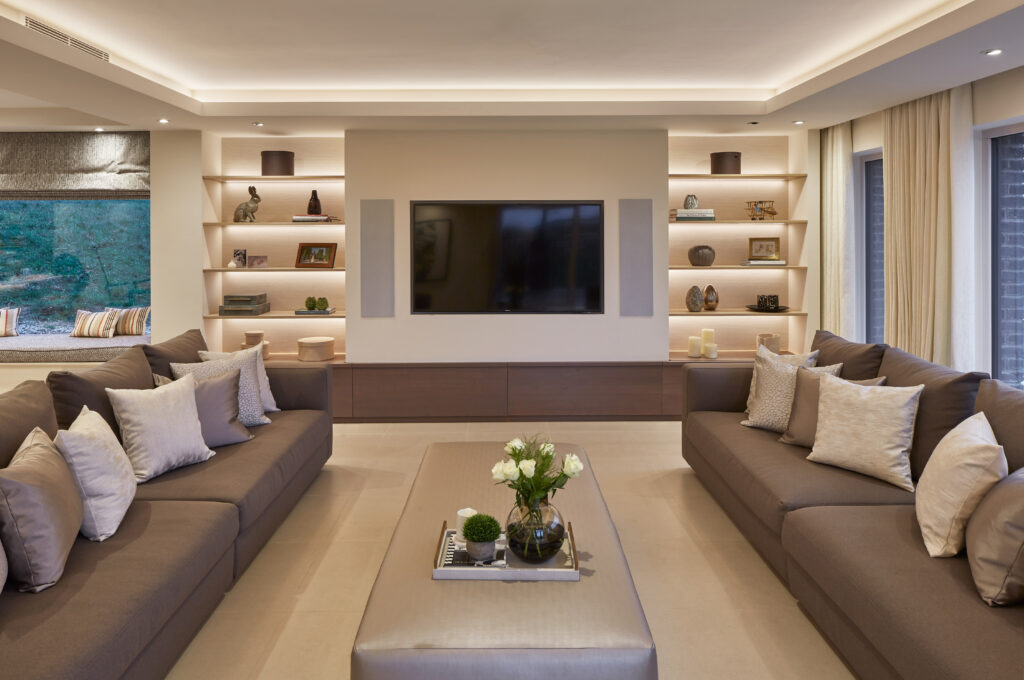Tips and ideas to get your lights spot on
The hallway is often the first part of the home that someone experiences when they come through the front door. Setting the tone of the welcome and the impression of the home is an important part of the lighting design for this specific space. Hallways come in many different shapes and sizes so there is not a standard set of tools that can be deployed here. In some homes, the hallway can be a narrow corridor leading to a kitchen or living room, in others it can be dominated by a staircase and larger homes will have a hallway as a room within its own right. Understanding the space, what it is primarily used for, and any furniture or artwork placements is the first place to start.
The style of the home, alongside the designs and layouts of other rooms also needs to be factored into this design. The lighting throughout the home needs to have a flow throughout so that the entire space blends together, rather than there being a jarring experience as one room is lit noticeably differently to another.
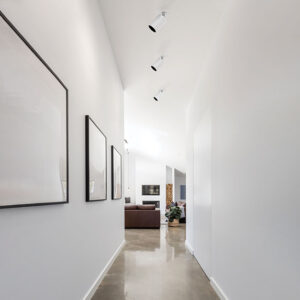
Dimensions
All three dimensions of the hallway need to be received, reviewed and analysed. A simple 2D plot will not allow for a full impression of the space and may lead to a flatter, uniform lighting design to be installed. All too often, this lack of detail will lead to a simple row of downlights installed into the middle of the hallway. Whilst this provides a perfectly acceptable light level, suitable for day-to-day living, it will not allow for specific features, artworks, or furniture to be pulled out and highlighted.
The height of the hallway can lead to a number of different conversations. Different people will want different things from their lighting. Taking a tall ceiling, for example, some people could want to create focus and drama around the elevations, drawing attention to the space, whereas others may want to use lighting to create a more intimate and closer impression. Different luminaires can help to achieve this. Pendants can be used to create the intimacy of the space, with the cable length set to the specific requirement. These pendants can artificially lower the feeling of the ceiling and have the secondary benefit of creating a central focus.
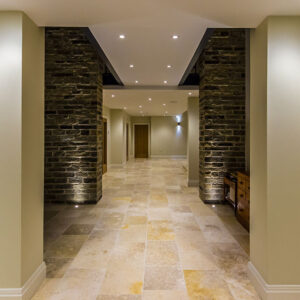
The width of the hallway will lead to similar conversations. All too often a sense of width is desired, where the hallway is narrower than people would like. The hallway can get congested at times when everyone is leaving or returning home. Uplighting one side of the hall can create an impression of width. Interesting and engaging lighting designs can play with the effects created and an asymmetry, when seldom used, can be a valuable technique.
Finally, the length of the hallway can be played with. Depending on the style of the architecture and the availability of interesting points to highlight, the choices to a lighting designer can be varied. If, for example, there are a succession or archways down the hallway, then these can be lit up in isolation to draw the eye down and create intrigue. If there are sculptures, alcoves or flower arrangements, then these can be highlighted using narrow beam spotlights to focus attention. Alternate approaches can be using LED strip lighting within coving or a drop ceiling structure to create soft, linear, diffused light down the hallway. The range and availability of profiles allows for LED strip to be used in more varied ways than ever before.
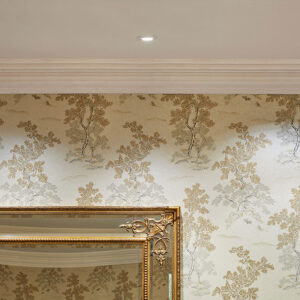
Features
Artwork, wallpapers and interesting wall textures are all specific items that can be illuminated. Wall textures can be extremely engaging and talks to the unique build of the home in question. Placing uplights close to the wall can draw out the definitions and create an exciting mix of light and shadow. The choice of beam angles needs careful consideration, as does the power output. The right combination of narrow or wide beam angle and low or mid power output will create the ideal effect for the design. Wallpapers may benefit from wider washing so that the entire piece can be seen and enjoyed, whereas artwork can be a challenging item to light. The size, scale and mounting of artwork will result in a different luminaire selection entirely. Framed artwork needs to be lit in a way to ensure that there is no glare of the glass, or the frame and a uniform light is delivered across the piece. High CRI values are crucial so that the colours of the artwork are properly experienced and enjoyed.
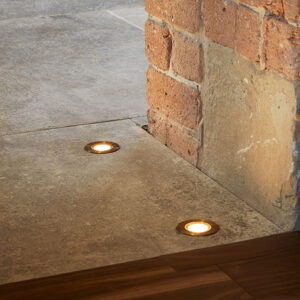
The flooring is final major element to review because this will impact the choice and style of the specific luminaries chosen. Wood, tiles, carpets and marble will all require subtle differences in colour temperature and body finish. Light and cream hues in marble will suit a stainless-steel body, especially if paired with wall colours of a similar nature, whereas oak floors with warmer tones will be paired better with antique brass bodies. Black ground lights are also becoming more popular choices in interior spaces to blend into darker floors and decors.
The controls and circuitry should be in place to allow for luminaire groups to be controlled separately. Having one switch to control all lights in a uniform nature doesn’t allow for changing moods and greater alignment with adjoining rooms and spaces in the home.
Overall, there are many elements to consider when lighting a hallway effectively. The dimensions of the space, the nature of the building materials, the function of the space and artwork, furniture and areas of interest all need to be effectively managed to create a coherent environment and lighting design. There are luminaires of all shapes and sizes to help achieve the desired effect, the challenge comes from selecting and controlling the best ones.


